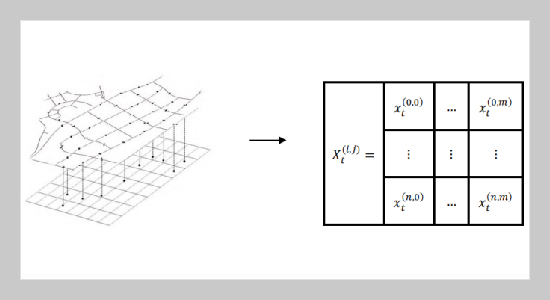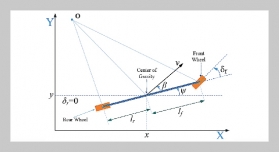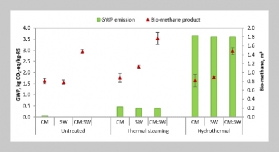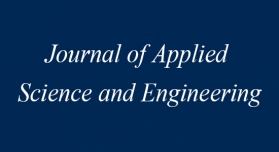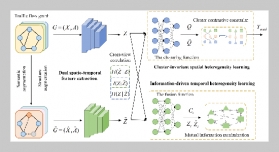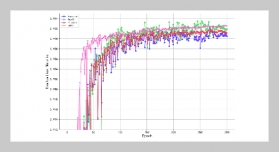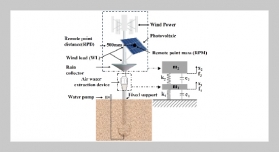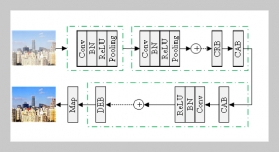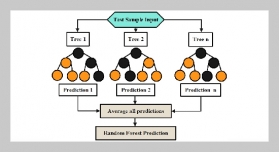- [1] R. Li, Y. Niu, S. R. Scott, C. Zhou, L. Lan, Z. Liang, and J. Li, (2021) “Using electronic medical record data for research in a Healthcare Information and Management Systems Society (HIMSS) Analytics Electronic Medical Record Adoption Model (EMRAM)stage7hospital in Beijing: cross-sectional study" JMIR Medical Informatics 9(8): e24405. DOI: 10.2196/24405.
- [2] S. Hu, (2022) “Research on monitoring system of daily statistical indexes through big data" Recent Advances in Computer Science and Communications (Formerly: Recent Patents on Computer Science) 15(5): 731–740. DOI: 10.2174/2666255813999201113124021.
- [3] L. S. dos Santos, P. H. R. F. Campos, W. C. da Silva, A. M. Veira, A. Z. Fraga, R. P. Caetano, and L. Hauschild, (2021) “Corrigendum to: Performance and carcass composition of pigs from two sire lines are affected differently by ambient temperature" Animal Production Science 61(6): 620–620. DOI: 10.1071/AN20078_CO.
- [4] S.Stavrakakis, W.Li,J.H.Guy, G.Morgan, G.Ushaw, G. R. Johnson, and S. A. Edwards, (2015) “Validity of the Microsoft Kinect sensor for assessment of normal walking patterns in pigs" Computers and Electronics in Agriculture 117: 1–7. DOI: 10.1016/j.compag.2015.07.003.
- [5] I. Camerlink, S. P. Turner, M. Farish, and G. Arnott, (2015) “Aggressiveness as a component of fighting ability in pigs using a game-theoretical framework" Animal Behaviour 108: 183–191. DOI: 10.1016/j.anbehav.2015.07.032.
- [6] A. Yang, H. Huang, X. Zhu, X. Yang, P. Chen, S. Li, and Y. Xue, (2018) “Automatic recognition of sownursing behaviour using deep learning-based segmentation and spatial and temporal features" Biosystems Engineering 175: 133–145. DOI: 10.1016/j.biosystemseng.2018.09.011.
- [7] A.Nasirahmadi, S. A. Edwards, and B. Sturm, (2017) “Implementation of machine vision for detecting behaviour of cattle and pigs" Livestock Science 202: 25–38. DOI: 10.1016/j.livsci.2017.05.014.
- [8] D. Liu, M. Oczak, K. Maschat, J. Baumgartner, B. Pletzer, D. He, and T. Norton, (2020) “A computer vision-based method for spatial-temporal action recognition of tail-biting behaviour in group-housed pigs" Biosystems Engineering 195: 27–41. DOI: 10.1016/j.biosystemseng.2020.04.007.
- [9] X. Meng, X. Wang, S. Yin, and H. Li, (2023) “Few-shot image classification algorithm based on attention mechanism and weight fusion" Journal of Engineering and Applied Science 70(1): 14. DOI: 10.1186/s44147-023 00186-9.
- [10] M. Ju, Y. Choi, J. Seo, J. Sa, S. Lee, Y. Chung, and D. Park, (2018) “A Kinect-based segmentation of touching pigs for real-time monitoring" Sensors 18(6): 1746. DOI: 10.3390/s18061746.
- [11] Z. Zhang, H. Zhang, Y. He, and T. Liu, (2022) “A review in the automatic detection of pigs behavior with sensors" Journal of Sensors 2022(1): 4519539. DOI: 10.1155/2022/4519539.
- [12] R.Sidhu, J. Sachdeva, and D. Katoch, (2023) “Segmen tation of retinal blood vessels by a novel hybrid technique Principal Component Analysis (PCA) and Contrast Limited Adaptive Histogram Equalization (CLAHE)" Mi crovascular Research 148: 104477. DOI: 10.1016/j.mvr.2023.104477.
- [13] Y. Fan, Y. Chen, X. Chen, H. Zhang, C. Liu, and Q. Duan, (2021) “Estimating the aquatic-plant area on a pond surface using a hue-saturation-component combi nation and an improved Otsu method" Computers and Electronics in Agriculture 188: 106372. DOI: 10.1016/j.compag.2021.106372.
- [14] K. Kwon and D. Mun, (2022) “Iterative offset-based method for reconstructing a mesh model from the point cloud of a pig" Computers and Electronics in Agriculture 198: 106996. DOI: 10.1016/j.compag.2022.106996.
- [15] M.vonBuelow, R. Tausch, M. Schurig, V. Knauthe, T. Wirth, S. Guthe, P. Santos, and D. W. Fellner, (2022) “Depth-of-field segmentation for near-lossless image com pression and 3d reconstruction" Journal on Computing and Cultural Heritage (JOCCH) 15(3): 1–16. DOI: 10.1145/3500924.
- [16] Y. Wang, K. Luo, Z. Chen, L. Ju, and T. Guan, (2021) “Deepfusion: A simple way to improve traditional multi view stereo methods using deep learning" Knowledge Based Systems 221: 106968. DOI: 10.1016/j.knosys.2021.106968.
- [17] B. Li, L. Liu, M. Shen, Y. Sun, and M. Lu, (2019) “Group-housed pig detection in video surveillance of overhead views using multi-feature template matching" Biosystems Engineering 181: 28–39. DOI: 10.1016/j.biosystemseng.2019.02.018.
- [18] Y. Guo, W. Zhu, P. Jiao, and J. Chen, (2014) “Fore ground detection of group-housed pigs based on the com bination of Mixture of Gaussians using prediction mechanism and threshold segmentation" Biosystems Engineering 125: 98–104. DOI: 10.1016/j.biosystemseng.2014.07.002.
- [19] R.Koju and S.R. Joshi, (2014) “Comparative analysis of color image watermarking technique in RGB, YUV, and YCbCr color channels" Nepal Journal of Science and Technology 15(2): 133–140. DOI: 10.3126/njst.v15i2.12130.
- [20] Z. H. Al-Tairi, R. W. Rahmat, M. I. Saripan, and P. S. Sulaiman, (2014) “Skin segmentation using YUV and RGB color spaces" Journal of information processing systems 10(2): 283–299. DOI: 10.3745/JIPS.02.002.
- [21] M. Kaseris, I. Mademlis, and I. Pitas. “Adversarial unsupervised video summarization augmented with dictionary loss”. In: 2021 IEEE International Conference on Image Processing (ICIP). IEEE. 2021, 2683–2687. DOI: 10.1109/ICIP42928.2021.9506088.
- [22] L. Wang, Y. Shoulin, H. Alyami, A. A. Laghari, M. Rashid, J. Almotiri, H. J. Alyamani, and F. Alturise. Anovel deep learning-based single shot multibox detector model for object detection in optical remote sensing images. 2024. DOI: 10.1002/gdj3.162.
